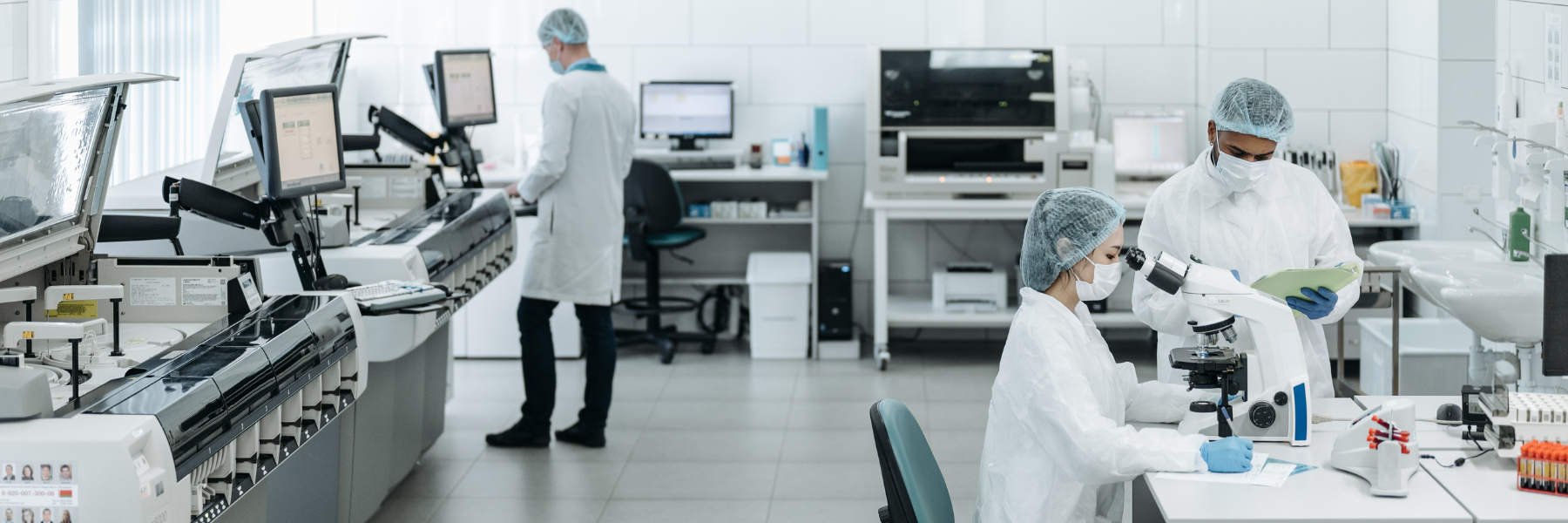The Pros and Cons of Different Science Laboratory Layouts
Implementing a well-designed, fit-for-purpose science laboratory presents numerous design challenges due to the specialist equipment and services required. Let’s explore the pros and cons of various science laboratory layouts to determine which features contribute to successful school science labs.
Fixed Bench Layout: Traditional Science Laboratory Design
Science labs differ from standard classrooms because they need specialist equipment and services. The fixed bench layout is a traditional science laboratory design with several advantages.
This design provides ample desk space for practical work and good access to under-bench equipment cupboards. It also ensures an excellent line of sight between teacher and pupil and easy access to underfloor services like gas, water, electricity, and drainage.
However, this science laboratory design also has drawbacks. There are safety concerns due to poor teacher access to students in the middle of each bank in the laboratory space. Services are often unavailable beneath each pupil, requiring movement for practical work. Students may have to work with their back to the teacher, presenting safety risks.
To mitigate these issues, gangways in the laboratory space should always remain clear, and science lab furniture should be stowed safely after each practical exercise.
Service Pedestals with Tables: Flexible Science Lab Layout
Many schools opt for service pedestals at different junctions around the laboratory to save space and facilitate easier service connections. This science laboratory design offers flexibility in desk arrangement and improved access for pupils and teachers.
It promotes collaboration through easy clustering of benches and provides necessary services without taking up valuable desk space.
However, this layout also has its challenges. Students may sit with their back or side facing the tutor in a science classroom, hampering communication. Performing experiments while facing away from the teacher can be dangerous. Additionally, unsecured benches can be noisy, rickety, and potentially hazardous.
Custom-Built Layouts: Modern Science Laboratory Design
Many modern school laboratories feature custom-built layouts that accommodate various lab sizes and shapes. At Innova Design Group, we’ve developed a specialist laboratory layout called the Hot Corner, which combines practical functionality with thoughtful design.
The Hot Corner science laboratory design accommodates practical and theory lessons while reducing spatial restrictions. It creates a more dynamic working environment than traditional row layouts and improves communication lines by relocating the teacher to the ‘long wall’.
This design enhances collaboration opportunities and ensures all students face the front, eliminating safety concerns of working with backs to the teacher in the science classroom.
Island-Style Laboratory Design: Promoting Collaborative Learning
The island-style laboratory design is gaining popularity in modern science education. This layout features central workstations or ‘islands’ that can accommodate small groups of students.
This design promotes collaborative learning and peer-to-peer interaction, essential skills in scientific research. It allows for easy circulation around the room, enabling teachers to provide individual attention and supervision. The island layout also offers flexibility, as the central units can be equipped with various services and adapted for different experiments.
However, this design may require more floor space compared to traditional layouts. It also necessitates careful planning of service distribution to ensure each island has access to necessary utilities without creating a cluttered or hazardous environment.
Technology Integration in Science Laboratory Design
As digital tools become increasingly integral to science education, laboratory designs must evolve to accommodate these technologies. Modern science laboratory designs should consider the integration of digital displays, data logging equipment, and computer workstations.
Incorporating technology into the science lab design can enhance data collection and analysis, facilitate virtual experiments, and provide access to online resources. It can also support blended learning approaches, allowing seamless transitions between practical work and digital activities.
When integrating technology, consider factors such as power supply, internet connectivity, and the positioning of screens to ensure visibility for all students. The layout should also allow for easy transitions between digital and hands-on work, maintaining the primacy of practical experimentation in science education.
Choosing the Right Science Laboratory Design
When selecting a science laboratory design, consider several key factors. Safety should be paramount, ensuring clear lines of sight and easy access for teachers to all students. Flexibility is important in choosing a layout that can adapt to various teaching methods and experiments.
The design should encourage collaboration, creating spaces that promote group work and peer learning. Service accessibility is vital, ensuring all necessary services are readily available where needed. Finally, space efficiency is important, maximising the use of available space without compromising functionality.
Enhancing Your Science Laboratory Design with Innova Design Group
We are best suited to understand the complexities of creating effective science laboratory designs. Our expertise in educational interior design allows us to offer bespoke solutions that meet your school’s and student’s unique needs.
We provide:
- Custom-designed layouts tailored to your specific requirements and space constraints.
- Expert advice on balancing safety, flexibility, and functionality in your science lab.
- High-quality, durable materials like sinks, chairs, and other furniture solutions that are suitable for the demanding environment of a school laboratory.
- Comprehensive project management from initial concept to final installation.
Our team of specialists can work with you to create a science laboratory that meets current curriculum requirements and adapts to future changes in science education. We understand educators’ challenges and can provide innovative solutions to ensure that your science lab remains at the forefront of educational design.
Get in touch
Contact us to explore how we can help you create a, safe and inspiring science learning environment.


